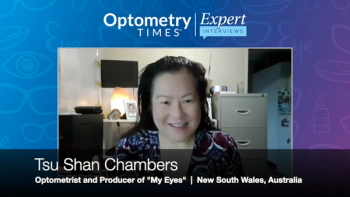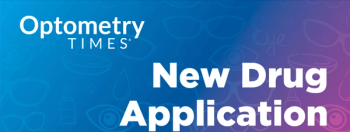
ICD-10 diaries: The first days of implementation
As the ICD-10 implementation deadline approached, we asked several practitioners to document their experience leading up to and the days after implementation.
As the ICD-10 implementation deadline approached, we asked several practitioners to document their experiences leading up to and the days after implementation.
Just like ODs around the country, each doctor prepared for ICD-10 in different ways, so they each experienced implementation differently. Their notes below reflect that.
Related:
Ernie Bowling, OD, FAAOGadsden, AL
Sept. 28, 2015
OK, this is the week. I have gotten all the resources I know and attended several ICD-10 preparatory classes, so we'll see how this all goes. Don't think this is going to be Armageddon.
First patient was a glaucoma suspect ICD-9 365.01. In this case, the ICD-10 conversion is H40.013. Isn't this going to be wonderful? Second patient was again a glaucoma suspect just like above-bilateral H40.013. Third patient was a run-of-the-mill nuclear cataract: 366.16 under the old ICD-9, H25.13 with ICD-10.
The next three were purely refractive diagnoses: myopia 367.1 to H52.13; presbyopia 367.4 to H52.4: astigmatism 367.2 to H52.203. Then walked in a corneal foreign body. The ICD-9 code is 918.1; the ICD-10 code S05.01XA. Next came a lid myokymia: ICD-10 H02.422.
What followed was another refractive case: presbyopia (H52.4). I can see this is going to be a little time-consuming, at least initially. Where before I knew these ICD-9 codes by heart, looking up the ICD-10 codes takes just a little time. So, I’m going to have my tech do it. Delegate!
The last morning patient was a secondary cataract: 366.53 with the old code, now H26.493, so sayeth my tech, somewhat sheepishly.
So, following a light lunch starts the afternoon patients. Begins with another cataract (H25.13). Then a patient with bilateral hypertensive retinopathy (H35.033). Followed by a simple myope (H52.13). Bilateral, don't you know. Next comes a bilateral hyperope (H52.03) with a refractive amblyopic LE (H53.022).
The next patient is a degenerative myope (H44.23).
The next two cases were interesting: A mother and son who both have a refractive amblyopia, him in the right eye (H53.021), her in the left (H53.022). The mother also has an iris nevus in the right eye (H21.231). The next patient presented with some vitreous floaters of the left eye (H43.312). Another simple myope, bilateral (H52.13).
Closed out clinic with another simple hyperope (H52.03), then a patient presenting with an acute allergic conjunctivitis in the left secondary to a bee sting (H10.212).
Sept. 29, 2015
I should say that we’ve been attempting to chart both ICD-9 and ICD-10 for the last few weeks, but we haven’t been diligent with it. Still, the limited experience has helped with the dry run.
I started today off with a patient with dry eye: 375.15 in ICD-9, ICD-10 H04.123. The next patient had two marginal corneal ulcers in his right eye (H16.041). The next patient was a simple bilateral myope (H52.13). Our next patient was very charming elderly lady with a dry eye bilaterally (H04.123) and dry macular degeneration (H35.31). This was followed by two simple myopes (H52.13) and a routine exam without any ocular findings (Z01.00). I am using this code because it is the one that I have heard the most about for routine use. There is a "Z" code for routine exam with ocular findings, which I assume to mean ocular pathology, which means it isn’t routine.
That routine exam was followed by a patient with peripheral lattice degeneration of the retina bilaterally (H35.413). And we finished the morning with a patient who has mild non-proliferative diabetic retinopathy without macular edema bilaterally (E11.329).
The afternoon clinic started off with a series of three cataract evaluations: old ICD-9 366.19, new ICD-10 H25.11 (right eye), H25.12 (left eye), and H25.13 (NSC bilaterally). That was followed by a nice lady with dry macular degeneration (H35.31), then two routine myopes (H52.13). Hey-I remembered this one.
One cataract post-op; this is a 366.19 and will convert to H25.812 (right eye).Then a glaucoma suspect: old 365.01, new H40.013 bilateral. A new patient with a posterior subcapsular cataract in the left eye (H25.042) followed. And I finished the day with another simple myope (H52.13).
Sept. 30, 2015
Well, today's the day before ICD-10 Armageddon, so I took the morning off.
My first patient of the day was a conjunctival laceration of the left eye (S05.02XA), followed by an epidemic keratoconjunctivitis OU (B30.1/077.4). The next patient was a bilateral simple hyperope (H52.03), followed by a myopic presbyope (H52.13/H52.4). The next patient presented with a chronic allergic conjunctivitis bilaterally (H10.45) and a hyperopic presbyope (H52.03/H52.4). This was followed by myopic presbyope (H52.13/H52.4) with Grade 1 hypertensive retinopathy (H35.033) and then a patient who is in for post-op dermatochalasis (H02.839) repair. The day ended with another simple myopic astigmat (H52.13/H52.203) and a keratoconic (H18.623) patient presenting for a scleral lens fit.
Carl Spear, OD, MBA, FAAO, and Katie Gilbert-Spear, OD, MPHPensacola, FL
Week of Sept. 10, 2015
We are ensuring all practices are upgraded to OfficeMate v12 (our practice management software) on all servers and workstations.
Week of Sept. 14, 2015
We reviewed the ICD-10 Readiness Checklist from OfficeMate and went through the after-upgrade checklist for ICD-10 to address the following:
• Setting up preferences to accommodate ICD-10 codes
• Setting up insurance to accommodate ICD-10 codes
• Sending test insurance claims
• Reviewing available training for staff for learning new procedures
We completed testing for all offices with VisionWeb and Emdeon claims processing software to ensure claims were converted to ANSI format and mapped correctly. It worked great, but then when we switched back, we had problems in getting back to ICD-9 and claims submission was delayed for six days.
Week of Sept. 21, 2015
We reviewed all procedures for September 30 to include:
• Closing and finalizing of all open exams
• Processing any existing insurance claims
• Reviewing all ExamWriter EHR templates for changes that will need to be made on Oct. 1
Our doctors reviewed ICD-10 coding guidelines online as well.
Sept. 24, 2015
We applied a patch to fix broken eRX in OfficeMate from Service Pack 1 software upgrade. Because it must apply to all workstations, we had to reinstall on 100+ workstations.
Week of Sept. 26, 2015
We applied Service Pack 2 for OfficeMate to fix problems from Service Pack 1 installation on all servers and workstations; we had to reinstall again on 100+ workstations.
We also reviewed ExamWriter templates and clinical decision support templates for changes that needed to be made for October 1.
Other work this week included:
• Ensuring any outstanding exams are finalized and closed
• Reviewing any existing insurance claims for processing
• Reviewing checklist to ensure all needed tasks for changeover are completed
• Ensuring all locations are on latest version of OfficeMate v12.03
• Having doctors review ICD-10 coding guidelines online
Sept. 30, 2015
We finalized and closed all exams, processed all existing insurance claims, and ensured all of our workstations and servers were closed and logged out. We performed a full database backup prior to midnight for all locations and stayed on late to ensure all charts and open charges were closed and all claims were transmitted from OfficeMate. Doctors continued to review ICD-10 coding guidelines.
Oct. 1, 2015
Today, we updated clinical decision support and ExamWriter templates as needed and started using ICD-10 codes on all exams.
We worked with the doctors to ensure the wording in OfficeMate is easy to find (i.e., some are too long, so the eye RT or LT is ending up outside of the readable text in Exam Writer; going in to admin to reword and move OD, OS, and OU to the beginning right after condition).
Mile Brujic, OD, FAAO
Bowling Green, OH
Sept. 28, 2015
This morning I made sure that we had our “cheat sheet” ready to go for the most common diagnosis codes that we use.
Sept. 29, 2015
This morning at our office meeting, we went over final plans for ICD-10. Cheat sheets for the most common codes are in all of the exam rooms, up front for the billers, and also for the doctor's private office. The EHR is handling the conversion automatically, but we are preparing so that we have access to the codes if anything goes wrong.
Sept. 30, 2015
Not much going on today. The office is preparing for our state conference in Cleveland which we will attend Thursday and Friday. ICD-10 conversion starts for us on Monday, Oct. 5.
Oct. 1, 2015
Read emails about many starting the conversion today while at our state conference with the whole office. Will be at the state conference tomorrow as well, so when we open for business on Monday, we'll be live with ICD-10.
Oct. 5, 2015
This is the first official day with ICD-10. The concerns were greater than the implementation. Although the bridging from the ICD-9 codes to the ICD-10 codes weren’t as automatic as we thought they were going to be in the EHR, it worked out OK. I did have to reference the cheat sheet that we have more than I thought we were going to.
Oct. 6, 2015
Second day in ICD-10. The first injury that I encountered. A number of phone calls and web searches later, I think that the injury was appropriately coded.
Newsletter
Want more insights like this? Subscribe to Optometry Times and get clinical pearls and practice tips delivered straight to your inbox.



















































.png)


